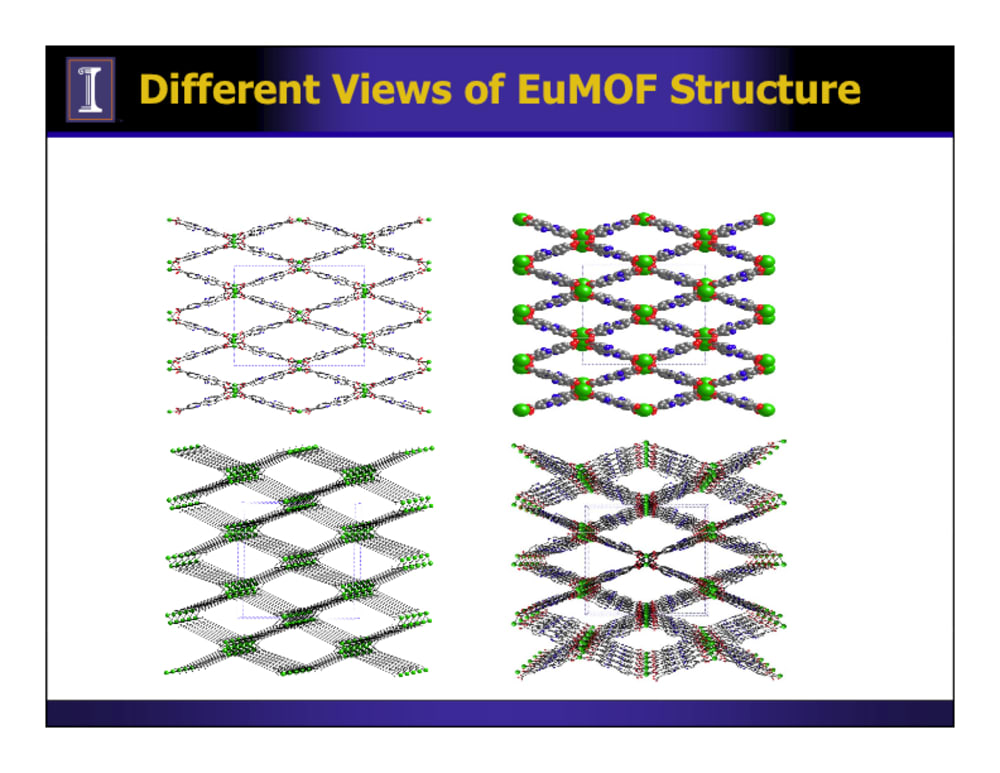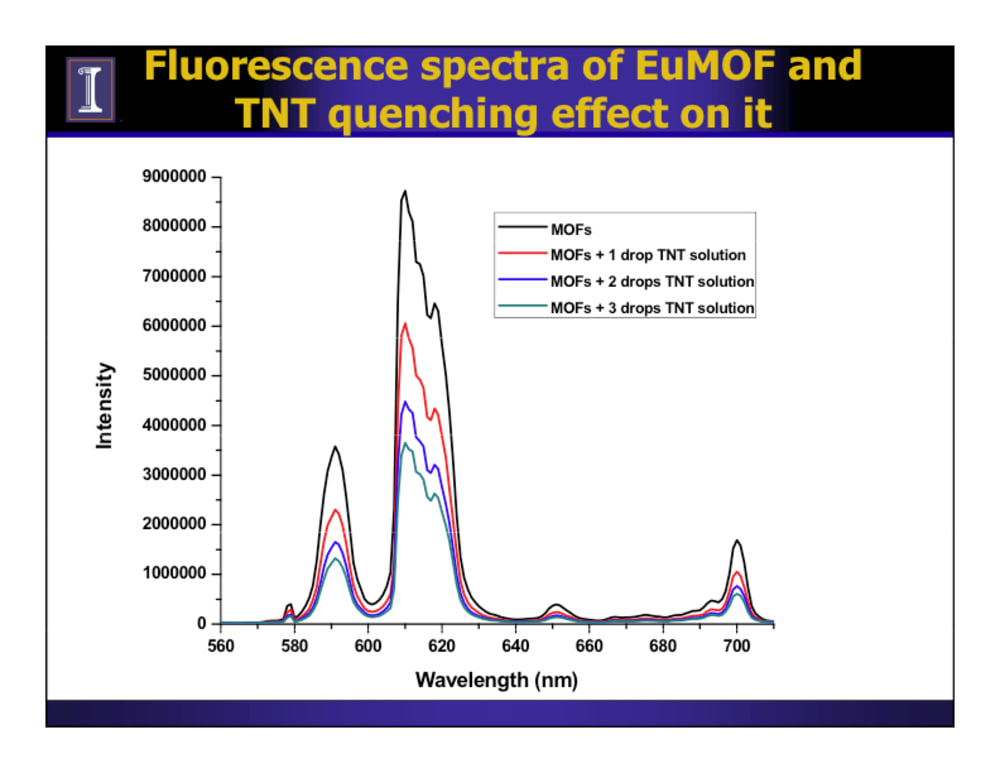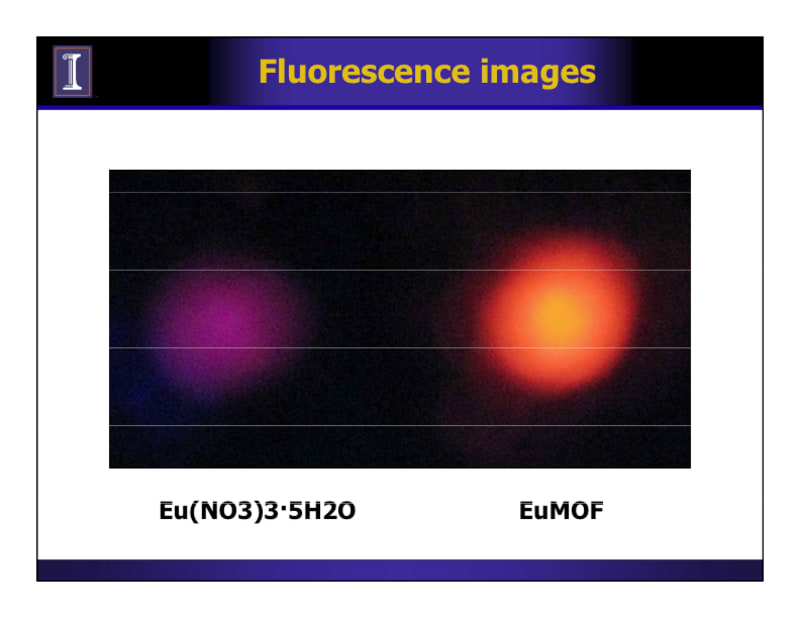Prof. Sailor first proposed one could use “smart dust” for the sensing of analytes several years ago. Smart dust is especially suitable for standoff detection which takes place at greater distances from people and assets to reduce the potential for severe damage. So far, all the smart dusts used for the detection of TNT are either porous silicon or polymers. However, most of them are not suitable for remote detection or gas detection. Moreover, they are not easily available.
Our idea is to create a kind of smart dust based on MOFs that have strong binding sites for TNT and strong fluorescence, which will be influenced by the presence of the explosives. The reasons that MOF is better than existing materials include: First, MOF has a much larger surface area than traditional porous materials. The larger the surface area is, the more analytes can absorbed into the material, and the higher the sensitivity is. Second, MOF is easy to be synthesized, and its raw materials are all commercially available. It only takes three days in an oven to produce our EuMOF particles. At last, strategies to design MOFs with strong binding sites to explosive molecules have been studied and described by Dr. Xiong from University of Tennessee. A pore opening of at least 10 angstroms is needed, so that the explosive molecules can fit into the MOF. In addition polar functional groups along the ligands can act as electrostatic anchor for intro groups on TNT.
The EuMOF can be obtained easily by solvothermal reaction of the two starting materials, 2, 2’-bipyridine-5, 5’-dicarboxylate acid and Eu(NO3)3?5H2O in DMF for three days. Eu(NO3)3?5H2O itself has weak fluorescence while the EuMOF emits much stronger red light under UV light in solid state at room temperature than Eu(NO3)3?5H2O. For the application of explosives detection, one just needs to sprinkle some EuMOFs over an area – such as battlefield – and shed a UV light onto them to analyze the environment/object. Here a portable fluorometer is needed to detect the fluorescence change. Detection of TNT is achieved by the quenching effect of TNT to EuMOFs. As our test demonstrated, the significant quenching effect will display as soon as EuMOFs are exposed to TNT.
TNT is well known as commonly used aromatic explosive in weapons. However, it is a pollutant in soil, groundwater, and food chain as well. TNT pollution in natural environment threatens people’s health. Even trace amount may cause severe diseases. In addition, homeland security problem has been brought forward due to the increasing terrorist activities. Therefore, detection of TNT is of significant importance in both military and environmental applications. Traditional techniques are restricted by disadvantages such as expensive instrument usage and time-consuming processes. More importantly most of them require sample collection and laboratory analysis. The MOF based smart dust detection method we developed possesses simplicity, sensitivity, rapidity, and cost-efficiency.
Like this entry?
-
About the Entrant
- Name:Lingjuan Shen
- Type of entry:teamTeam members:Lingjuan Shen
Tianjiao Wu
Richard Masel - Patent status:none








